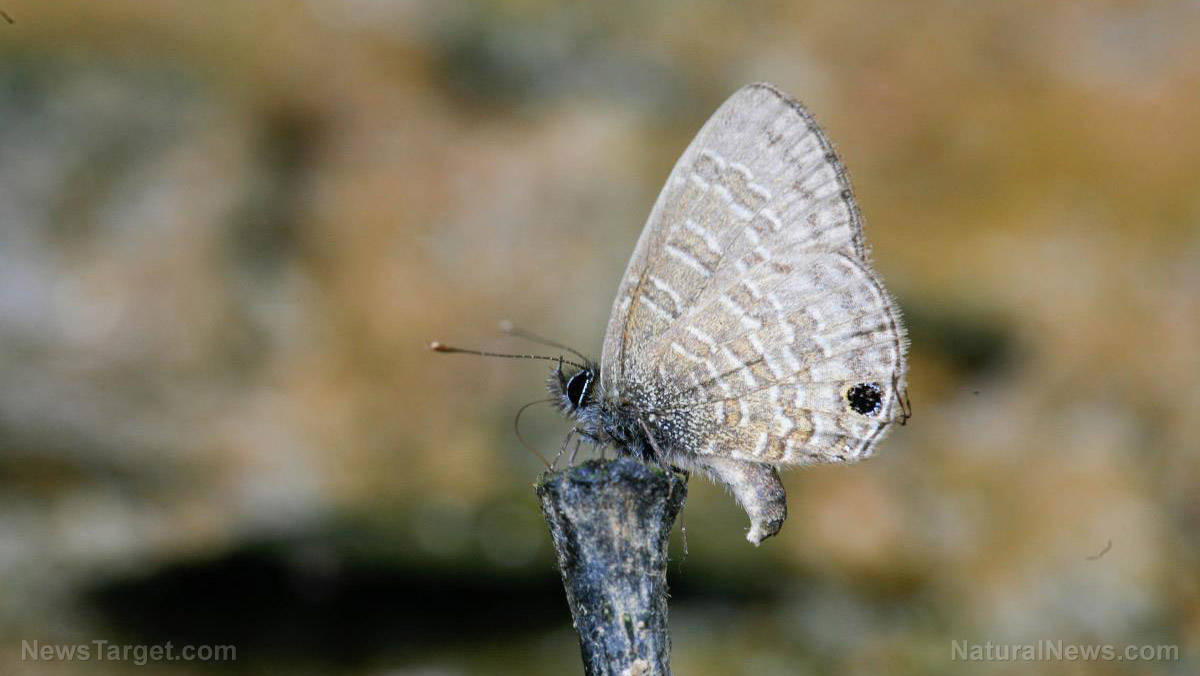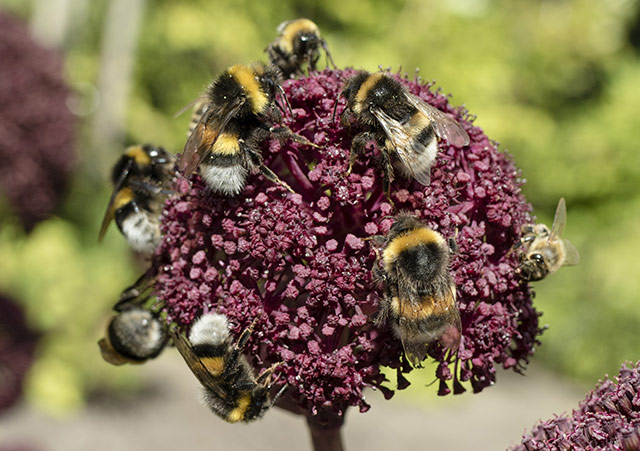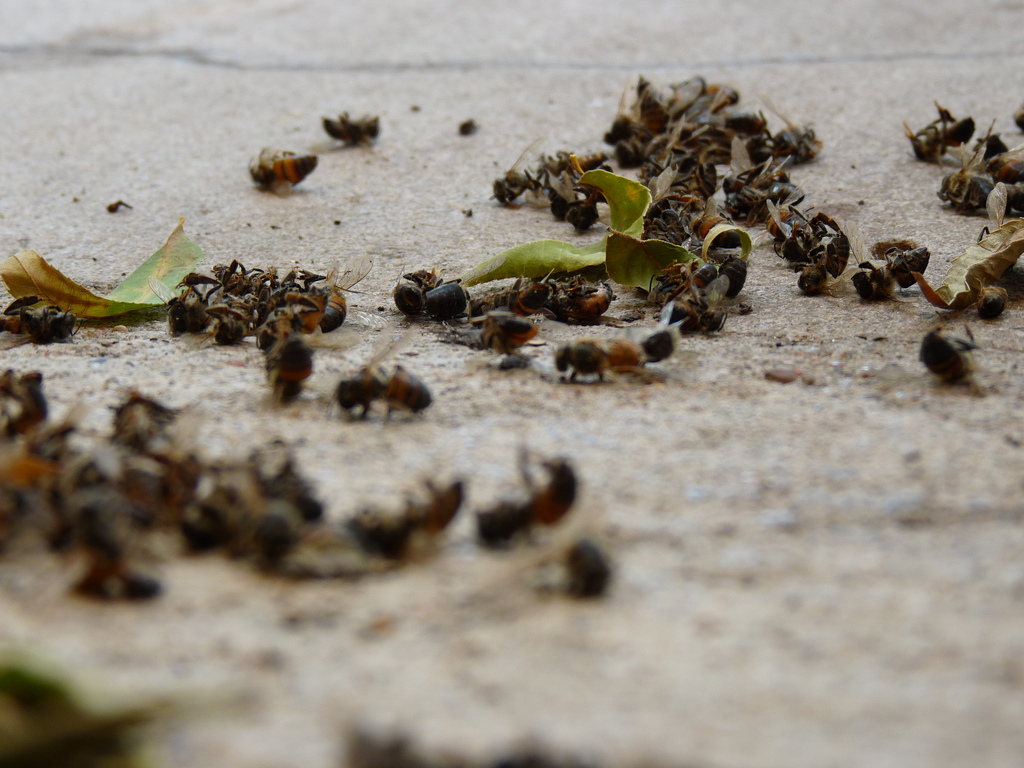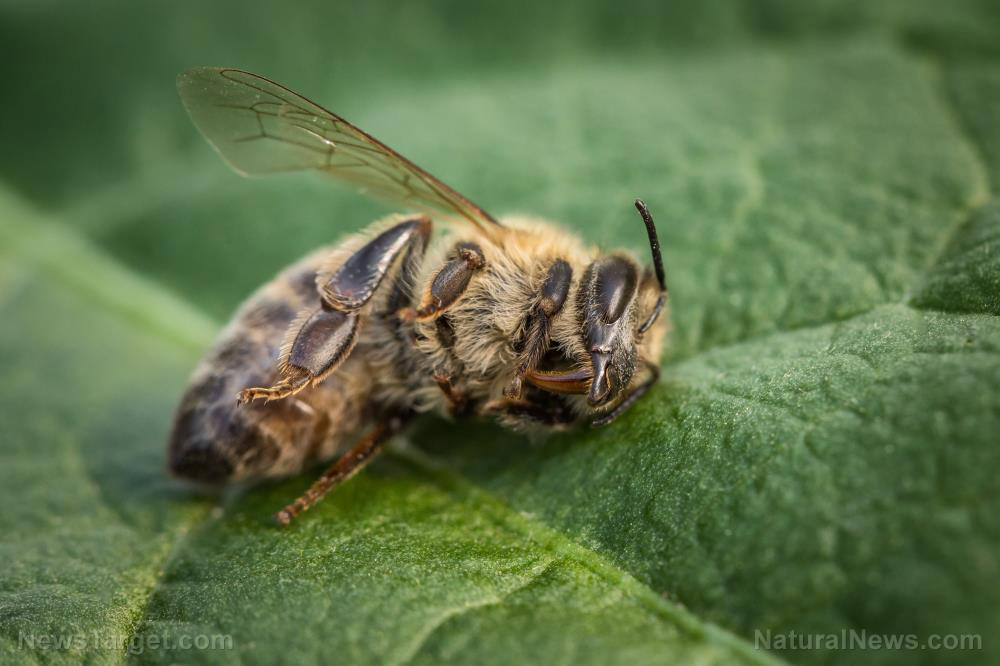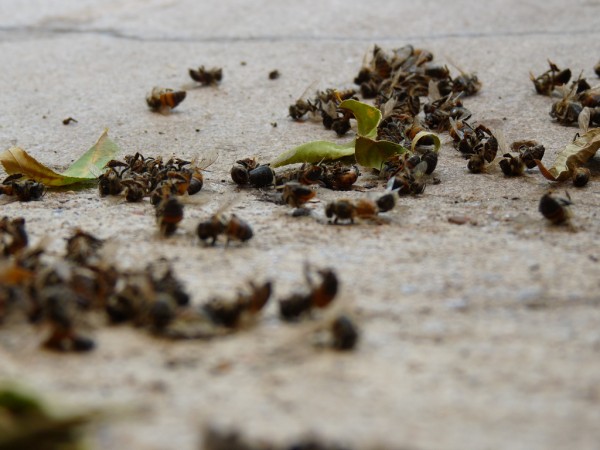
A bee expert told NBC affiliate, WBBH-TV, that it is incredibly unusual to have bees washing up on the beach. He offered two possible reasons for the strange occurrence: 1) that the bees could have been affected by the nearby spraying of chemical pesticides, or 2) that an overhead swarm simply became exhausted and flew into the water.
Though the latter explanation is certainly possible, the former is far more likely, since the death of these bees is by no means an isolated occurrence, and the blame can be laid squarely at the door of chemical pesticides.
Pesticides called neonicotinoids, or neonics as they are commonly known, are routinely used in monocultures and chemical-based agriculture to keep insects off crops. Neonics are sprayed both directly onto crops and used as a seed coating. Almost all the corn and canola seed in the U.S. are sprayed with these dangerous chemicals.
Neonics attack the central nervous systems of insects, including bees, by binding to their enzyme nicotinic acetylcholine receptors. This excites their nerves, eventually paralyzing and killing them.
Neonicotinoids are systemic pesticides, meaning they are taken up right into the plant, affecting every part, including the roots, stem, leaves, and flowers, as well as the pollen and nectar.
These pesticides have put the very survival of bees and other pollinators at risk.
As tragic as this is for the bees themselves, it also puts the very survival of humans at risk, since we are reliant on bees and other pollinators for much of our food production. According to the National Resources Defense Council, honeybees alone pollinate over $15 billion worth of U.S. food crops each year.
While many activists are trying to turn the situation around with petitions to curtail the use of pesticides, far bigger and more urgent steps need to be taken to save the bees.
Though the Environmental Protection Agency (EPA) has acknowledged the detrimental effects of the three most common types of neonics (clothianidin, thiamethoxam, and dinetofuran) on bee populations, it has thus far refused to place restrictions on their use. As long as the EPA continues to green-light the use of these dangerous chemicals, it will be almost impossible to win this important battle.
Though we individually may not be able to affect national change, there are small changes each of us can make in our own home garden to create a welcoming and bee-friendly environment. After all, 300 million American gardens could provide a safe haven for billions of bees.
https://www.youtube.com/watch?v=fuAE4riYuR0
Some tips for establishing a bee friendly garden:
- Choose bee-friendly flowers rich in pollen and nectar, and stagger their planting to attract bees year-round. Early bloomers include willows, hawthorn, and the blossoms of fruit trees. In summer, bees will be attracted to clover, calendula, and borage, among others. And late bloomers include aster, echinacea, and common ivy.
- Plant your bee-friendly plants in the sunniest part of the garden.
- Allow some areas of your garden to grow wild, with no mowing, weeding, etc. This will allow space for dandelions and thistles, which are a rich source of both nectar and pollen.
- Protect the bee habitat in your garden by being careful not to disturb their nests or hibernation sites.
- Make sure that your garden is organic, avoiding the use of all chemical pesticides and weed killers.
With more and more species of bees becoming extinct, their survival truly is hanging in the balance. We all need to work together to turn this situation around.
Sources:
Please contact us for more information.

















